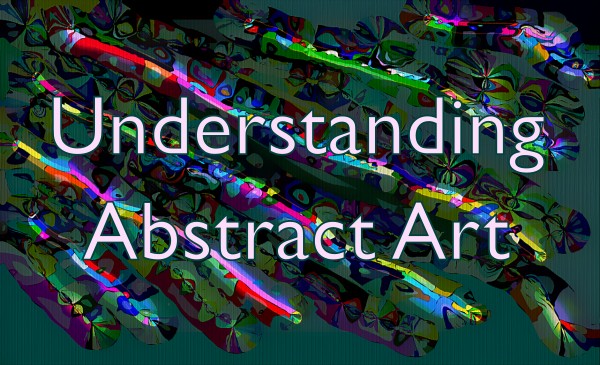Home page | Generative Images Collection | Blog Entries

Understanding Abstract Art: A Journey into the Intangible
Published on 22 December 2023 by Juan-S.
Abstract art is a form of artistic expression that eschews the conventional representation of tangible objects, opting instead for a departure into the realm of the intangible. It challenges traditional notions of art, inviting viewers to engage with shapes, colors, and forms that may not have direct correlations to the observable world.
Abstract art is a form of artistic expression that does not aim to represent reality, but rather to create a visual language of shapes, colors, forms and gestures that can evoke emotions, sensations and meanings. Abstract art is often seen as challenging, mysterious or difficult to understand, but it can also be a source of beauty, inspiration and creativity.
Abstract art emerged in the early 20th century, as a reaction to the traditional and realistic styles of art that dominated the 19th century. Abstract art was influenced by various movements and trends, such as Cubism, Expressionism, Futurism, Surrealism and Dadaism. These movements challenged the conventions of art and explored new possibilities of representation, abstraction and experimentation. Abstract art also reflected the social and cultural changes of the time, such as the industrial revolution, the world wars, the rise of psychology and the development of science and technology. Today, abstract art is still a vibrant and dynamic field of artistic expression, with many contemporary artists exploring new forms and media.
Abstract art continued to evolve and diversify throughout the 20th century and beyond, giving rise to different styles and genres, such as Abstract Expressionism, Geometric Abstraction, Minimalism, Op Art and Neo-Expressionism.
Color Theory in Abstract Art
One of the key elements in abstract art is color. Artists use color to evoke emotions, create harmony, or introduce discord. Understanding the principles of color theory is crucial in deciphering the emotional nuances embedded in abstract compositions.
Shapes and Forms. Texture and Movement.
In the absence of recognizable subjects, abstract art relies heavily on shapes and forms. Geometric or organic, these elements contribute to the overall visual impact of a piece, encouraging viewers to explore the interplay between positive and negative spaces.
Abstract art uses lines, shapes, colors, forms and gestures as symbols that can convey meanings beyond their literal appearance. These symbols can be influenced by the artist's personal experiences, emotions, thoughts or beliefs.
Texture adds a tactile dimension to abstract works, while movement creates a dynamic energy. Artists often employ various techniques, from impasto to gestural strokes, to infuse their creations with a sense of movement and touch.
Interpreting the Unseen: A Personal Journey
Unlike representational art, abstract works often lack a clear narrative. This ambiguity invites viewers to engage actively with the artwork, interpreting it based on their own experiences, emotions, and perspectives. The viewer becomes an integral part of the creative process.
Understanding abstract art requires an open mind. By relinquishing preconceived notions and embracing the ambiguity, viewers can appreciate the diversity of interpretations and find personal meaning in the seemingly enigmatic compositions.
Abstract art does not have a fixed or definitive meaning that can be easily understood by everyone. Instead, it invites multiple interpretations that depend on the viewer's perspective, background and context. Abstract art can also stimulate curiosity and imagination by leaving some aspects ambiguous or open-ended.
Digital Abstraction and Technology
Abstract artists use a variety of techniques to create their artworks, ranging from traditional methods to more experimental ones. The advent of digital tools has given rise to new forms of abstract expression. Artists harness technology to create immersive and interactive experiences, pushing the boundaries of traditional artistic mediums.
Generative art is a form of creative expression that uses algorithms and artificial intelligence to produce or guide the creation of artworks. Generative art can be applied to various media, such as images, music, text, or video. Generative art often explores the relationship between human creativity and machine intelligence, as well as the aesthetic possibilities of computation and randomness.
A Kaleidoscope of Possibilities
Abstract art does not aim to represent things as they appear in the visible world, but rather to create a new reality based on the artist's imagination or intuition. Understanding abstract art is a journey into the uncharted territories of creativity and perception. It invites us to explore the intangible, challenging us to appreciate the beauty that exists beyond the confines of the familiar. As we delve into the world of abstract art, we discover a kaleidoscope of possibilities, each interpretation as unique as the observer.
The above article content and research regarding Abstract Art was compiled with the assistance of AI.
About me | Contact me | Generative Images Collection | Blog Entries
Terms of Use | Privacy Policy | Cookie Policy (This website uses cookies and by continuing to browse this website you agree to the website’s Cookie and Privacy Policies.) | Sitemap
Copyright © juansteph83.com All rights reserved.